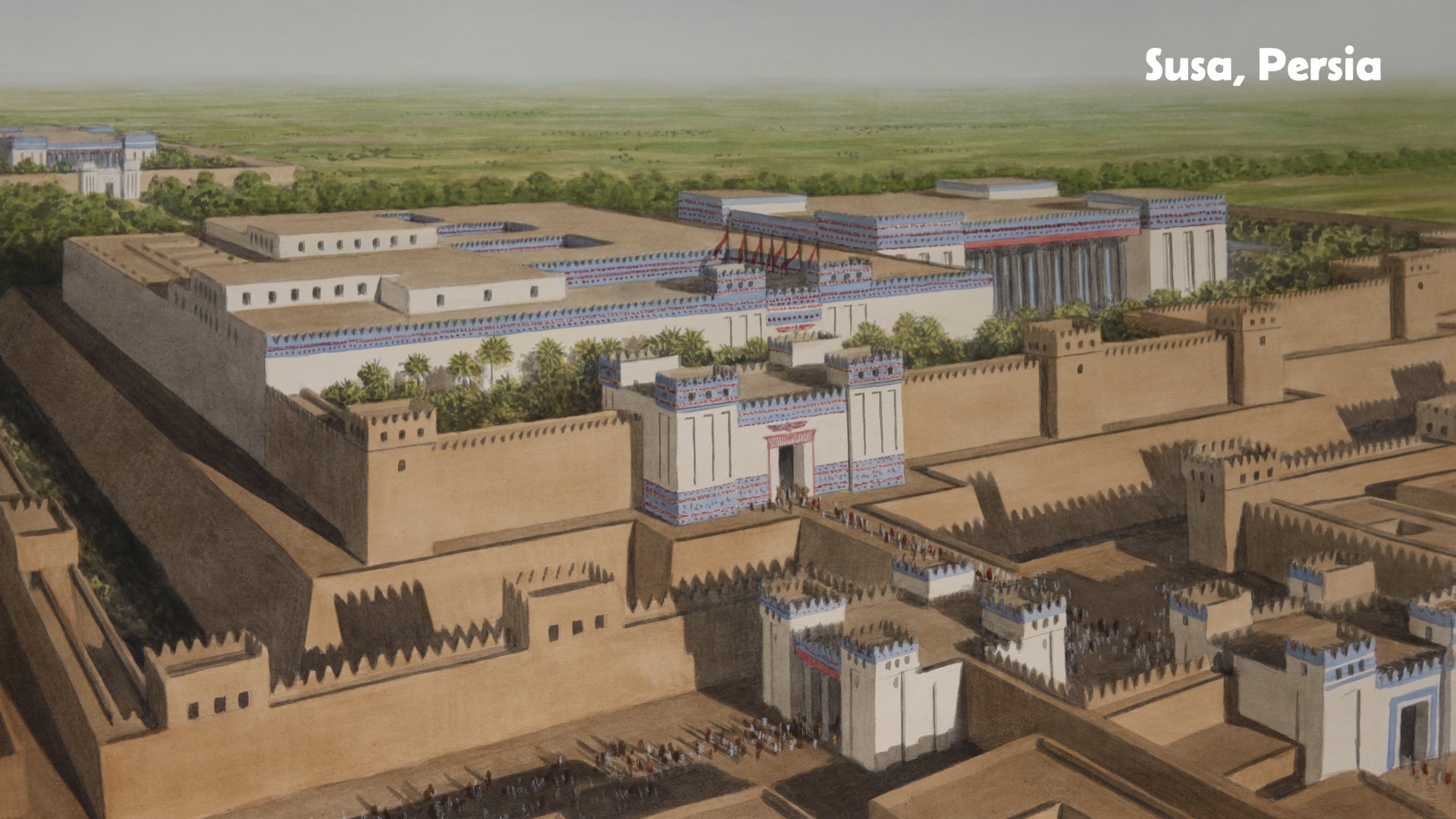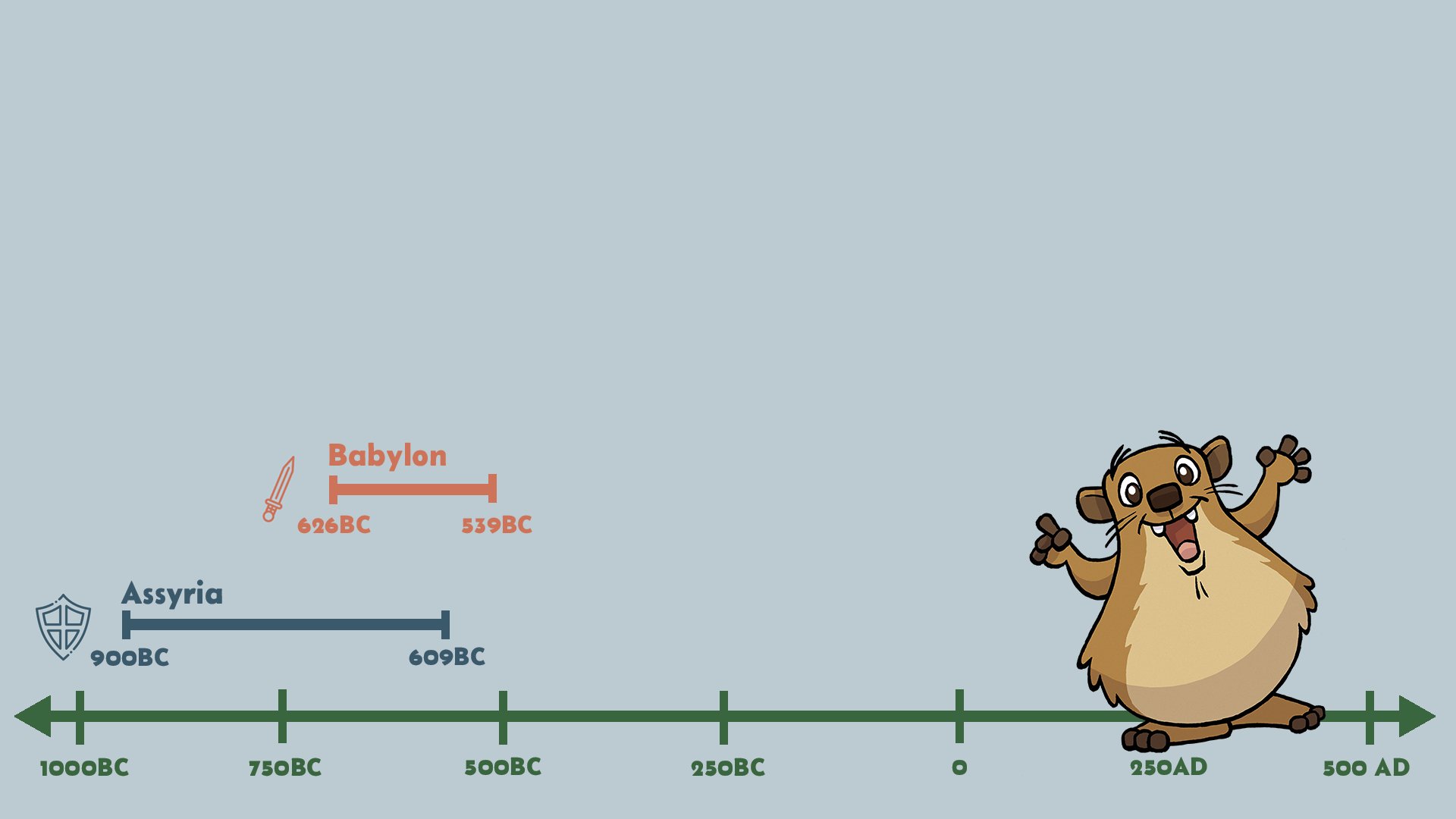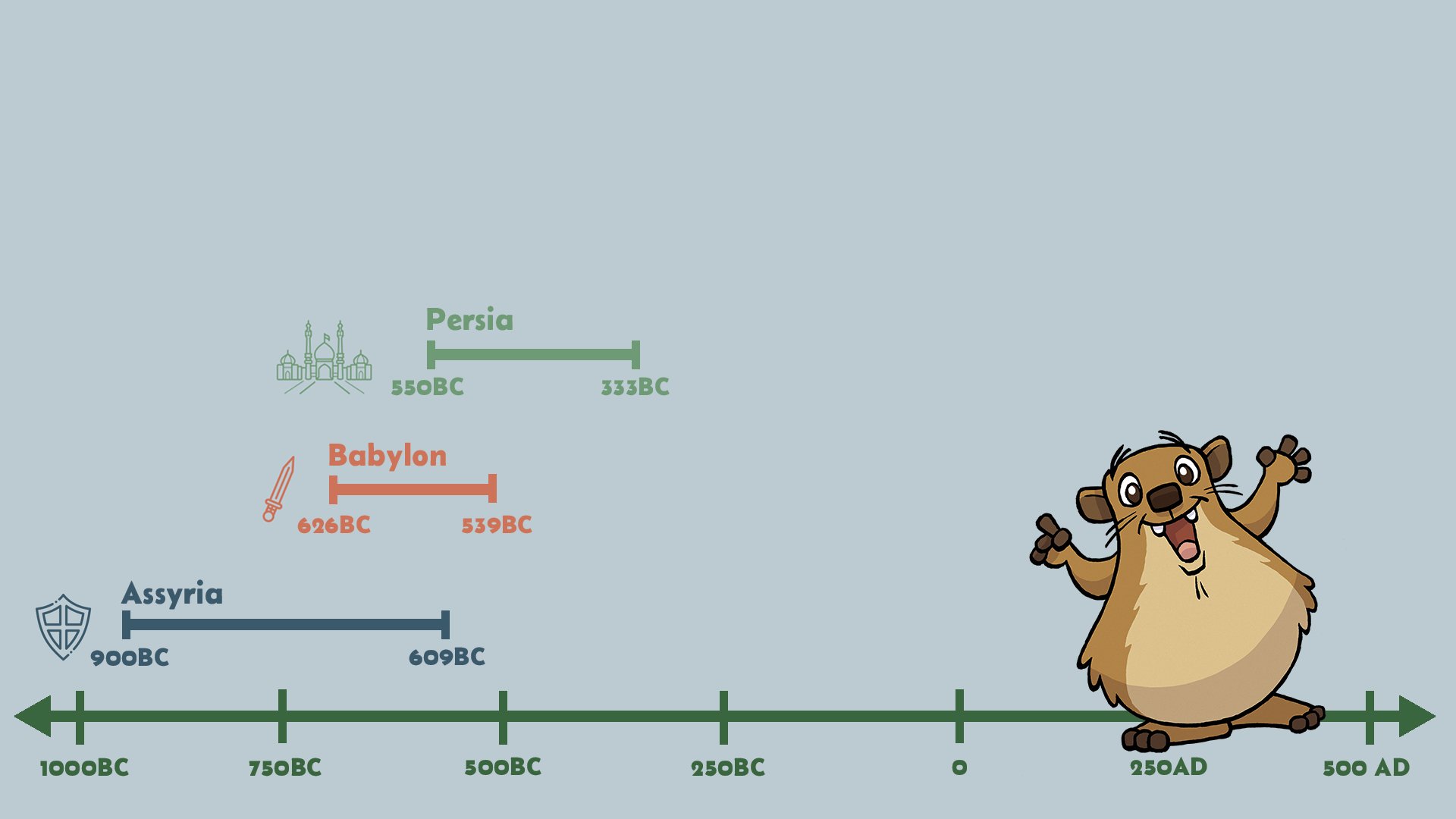LESSON INFORMATION
Unit Essential Questions:
What is the historical context of the world at the time of the kings and prophets?
What were the Empires that impacted the Biblical story?
How did the empires of the world impact God’s people?
Lesson Essential Questions:
Who were the Persians?
Bible Text:
None
Contextual Lenses:
Learning Goals:
Learners will be able to reflect on who the Persians were through the historical, cultural, geographical, and linguistic contextual lenses.
Common Core ELA:
CCSS.ELA-Literacy.RI.4.-Refer to details and examples in a text when explaining what the text says explicitly and when drawing inferences from the text.
CCSS.ELA-Literacy.RI.4.4-Determine the meaning of general academic and domain-specific words or phrases in a text relevant to a grade 4 topic or subject area.
CCSS.ELA-Literacy.RI.4.9-Integrate information from two texts on the same topic in order to write or speak about the subject knowledgeably.
CCSS.ELA-Literacy.SL.4.2-Paraphrase portions of a text read aloud or information presented in diverse media and formats, including visually, quantitatively, and orally.
Teaching Points:
The Persian Empire was a powerful empire that conquered the Babylonians.
Cyrus the Great, the leader of the Persian Empire, allowed the Israelites to go back to their homeland.
LESSON PREPARATION
What you should prepare . . .
-Set Up the Slides: Download and get the presentation slides ready to show.
-Prep the Posters: Print and laminate the posters for each station so they’re ready to use.
-Grab Supplies: Make sure you have crayons or markers for Stations 2 and 4.
-Passports and Pencils: Have the students grab their passports and a pencil to use during the activity.
What you should know . . .
Empires around the world had many different historical eras and rulers. They were led by powerful kings, and many of them began as small kingdoms that took hundreds of years to grow into mighty empires.
Figuring out when these empires began and ended isn’t always easy. Some timelines are clearer because these empires were conquered in famous battles. However, their influence is harder to measure. These empires shaped the world in lasting ways and inspired those that came after them.
The capitals of these empires often changed over time, but in this study, we’ll focus on the time periods, capitals, and kings that connect to stories in the Bible. This unit will help you better understand the world of kings and prophets of the Bible and the history that surrounded them. Let’s dive in and start exploring!
LESSON INTRODUCTION
Get Ready to Travel Back in Time!
Today, we’re going on an exciting journey to explore the Persian Empire! (Slide 1: Persia) Do you have your passports ready?
(Slide 2: Kingdoms Graphic) The Persian Empire is the third of five empires we’ll visit on our adventure. The others are Assyria, Babylon, Greece, and Rome. Each of these empires played an important role in the Bible story, and together, they help us understand the world of the kings and prophets.
As we learn about these empires, we’ll add them to a timeline. (Slide 3: Timeline) This timeline will be the foundation for our study about the Kings and Prophets in the Bible.
To explore the Persian Empire, we’re going to look through four context lenses:
History
Geography
Linguistic
Culture
You’ll be split into four groups, and each group will visit a different station to learn about one of these lenses.
Are you ready to begin this adventure? Grab your passports, and let’s travel back to the time of the Persian Empire! (Slide 4: Persian Empire Slide)
ENGAGING WITH CONTEXT
Activity: Exploring the Persian Empire
Setup:
Divide learners into four groups and assign each group to a station. Each station will focus on a different aspect of the Persian Empire through a lens of context. Learners will use their passports to record what they discover. Set a timer for 5 minutes. When time is up, groups rotate to the next station.
Station 1: History (5 minutes)
Let’s discover the story of the Persian Empire!
Read Together: Start by reading the information provided about the Persian Empire.
Timeline Activity:
Open your passport to the timeline section.
Mark when the Persian Empire began and ended.
Draw a line connecting these dates to show how long the empire lasted.
Word Puzzle:
Use the clues in your passport to solve the crossword puzzle. Work as a team to find the correct answers based on the reading.
The Persian Empire
The Persian Empire was one of the largest and most powerful empires in ancient history, lasting from around 550 BC to 333 BC. It was ruled by great kings like Cyrus the Great and Darius I, who expanded the empire across Asia, Africa, and Europe.
The Persians are mentioned in the Bible, with the prophet Isaiah giving a prophecy about Cyrus 150 years before he became king. After defeating the Babylonians in 539 BC, Cyrus allowed the Israelites to return to Jerusalem and rebuild their temple. Known for being fair rulers, the Persians let people in their empire keep their own cultures and religions.
They also built the Royal Road, an impressive system that made travel and communication easier. Their elite soldiers, called the Immortals, were always ready to defend the empire.
The capital of the Persian Empire was Susa, but Persepolis served as its ceremonial capital. The empire ended in 333 BC when Alexander the Great, leader of the Greek Empire, defeated the Persians, but their legacy of fairness and innovation continued to influence history.
Puzzle Questions and Answers:
Down:
The prophet ____________ gave a prophecy about a Persian King 150 years before he became king.
Persian elite soldiers were called _____________.
A Persian ruler was named ______________ the Great.
The ceremonial capital of the Persian Empire was ______________.
Across:
__________ ____ _______ conquered the Persians in 333 BC..
The Capital of Persia was ____________.
Cyrus allowed the Jews to return to Jerusalem to rebuild the ____________.
The ____________ Road helped make travel and communication easier.
Station 2: Geography (5 minutes)
Let’s explore the map! The Persian Empire became one of the largest empires in history. It stretched from Europe all the way to India. The capital of the Empire was located in what is now modern-day Iran.
Find Your Home and Iran:
Look at a globe or map. Can you find where you live?
Now, find Iran! That’s where the Persian Empire was located.
Color the Persian Empire:
On the map in your passport, color in the area where the Persian Empire once ruled. Use bright colors to show how big it was!
Station 3: Linguistic (5 minutes)
Let’s learn about language! Persians spoke a language called Old Persian. The fourth king of the Empire, Darius the Great, made Aramaic the official language of the Empire.
Match the Old Persian Words:
Work together as a group to try pronouncing each Old Persian word using the English pronunciation guide.
Match each Old Persian word with the picture that shows what it means.
Once you're finished, check the answer key to see how many you got correct.
How many did your group get correct? Great job exploring the language of the Persian Empire!
Old Persian Words
𐎣𐎢𐎳(k-u-f/kaufa/) - Mountain
𐎭𐎿𐎫(d-s-t/dasta/) - Hand
𐎴𐎠𐏃𐎶(n-a-h-m/nāham/) - Nose
𐎨𐏁𐎠𐎶𐎴(c-š-a-m-n/cašman-/) - Eye
𐎢𐎺𐎼(u-v-r/ʰuvar/) - Sun
Station 4: Culture (5 minutes)
Let’s dig into the past through artifacts! Archaeologists are like detectives of history. They learn about ancient empires and the people who lived in them by studying special objects, called artifacts, that are buried in the ground. These artifacts tell us amazing stories about life long ago.
Read through the artifact posters together.
Pick an Artifact:
Choose one of the artifacts described in the reading.
Look closely at what makes it special and imagine what it was used for.
Draw It:
In your passport, draw a picture of the artifact you chose. Be creative and add lots of detail!Write One Cool Fact:
Write down one interesting thing you learned about the artifact.
Persian Relief Sculpture: A relief sculpture is carved from stone and appears to “pop-out” of the stone from which it was carved. From the left to the right, this sculpture depicts Persian Guards, an Armor Bearer, a Magus (wise man), and the Crown Prince. Art helps us learn about people in the Persian Empire. The Magi were very important in the Persian Empire. Magi were priests, scribes, scientists, mathematicians, magicians, and medicine men. They interpreted dreams and studied the stars. The Bible tells us that Magi visited Jesus when he was a toddler in Bethlehem.
The Cyrus Cylinder: The Cyrus Cylinder is inscribed with cuneiform script that records the victory over Babylon by the Persian king Cyrus the Great in 539 BC. It also records how Cyrus let deported people like the Jews return home. The cylinder is shaped like a barrel and made of baked clay. It is about 9 inches long. You can see this ancient cylinder in the British museum.
Gold Griffon Armlet: The ancient Persians were famous for their incredible metalwork! This bracelet is a great example—it has two griffons on it. A griffon is a mythical creature with the wings and head of an eagle and the body of a lion. Griffons were an important symbol of the great ceremonial capital city of Persepolis. The hollow spaces in the bracelet would have been filled with colorful glass or jewels. Persian kings gave bracelets like this as special gifts to honor important guests.
EXPLORE THE STORY
(Slide 5: Timeline-Persia)
Gather learners together and ask if they discovered the dates marking the Persian Empire. Bring the timeline up on a screen. Spend a few minutes discussing learner’s discoveries. Possible wondering questions/starter points:
What was the most interesting thing you learned today?
If you could visit the Persian Empire, what would you want to see or do?
What surprised you the most about the Persians?
What connection did the Persian Empire have to the Bible?
RESPOND TO THE STORY
Passports Stamps:
When learners finish filling out the information in their passports, celebrate their achievement by adding the empire’s stamp inside! This stamp shows they’ve “explored” the Persian Empire and learned all about it. Great job, explorers!
Lesson Files Include:
Lesson PDF
Presentations Files (Keynote, Power Point, Google Slides)
Station Posters
Passport Printout
Passport Stamp Printout
Passport stamp sticker sheets coming soon!
Contact info@lovegodloveothers.com if you are interested in trying out this unit with your students!











